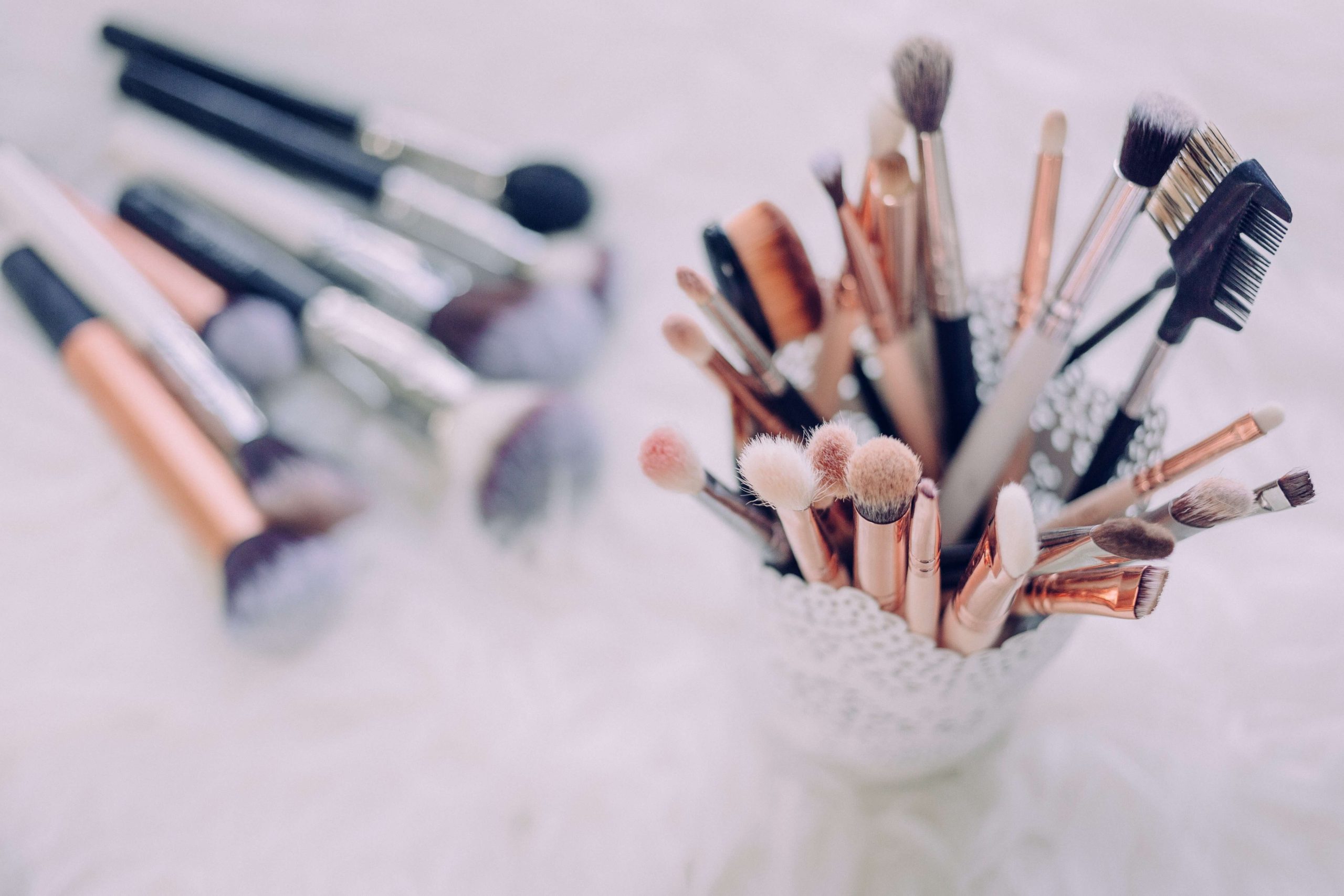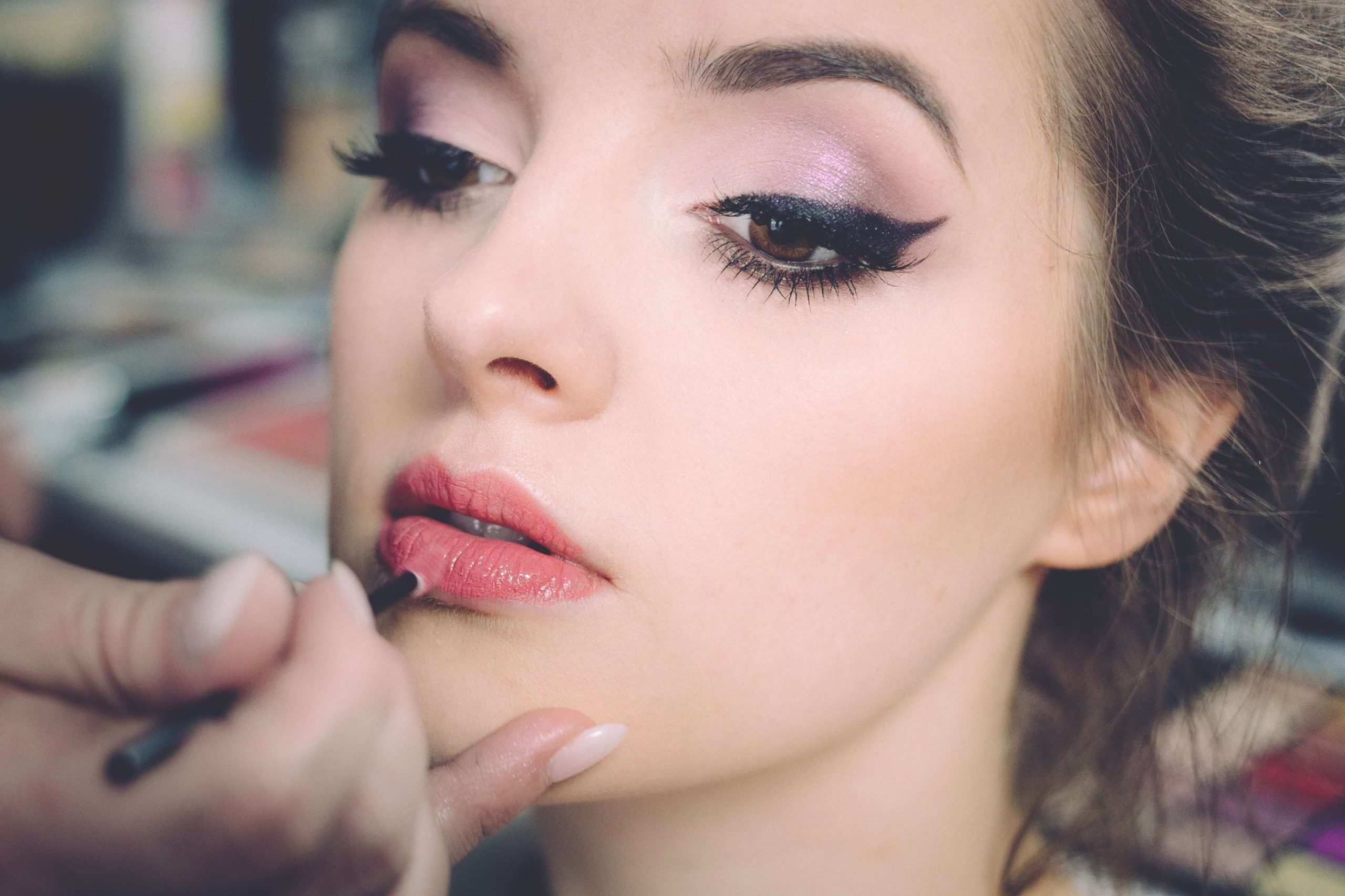Different Types of Makeup Brushes: A Complete Guide
04/10/2023 2023-10-04 15:01Different Types of Makeup Brushes: A Complete Guide
We are often tempted to buy things when we see attractive discounts in package deals. Makeup brushes are a perfect example of this. But it’s easy to get confused over which brush is meant for what in a multipack set. To get the most out of your makeup, you must look into the different types of makeup brushes, how to use them, and tips for cleaning makeup brushes.
This article covers all you need to know about the different types of brushes and their uses. After this, you’ll have the basics on how to use all makeup brushes at the tips of your finger to make all your makeup dreams come true.
Types of makeup brushes with their uses
There are many makeup application products in the market nowadays. But even so, brushes are always a staple. Here’s a list of makeup brushes and uses.
Face Make-up Brushes
- Foundation Brush
The first step in every makeup process is a smooth application of foundation. But blending foundation, whether liquid or powder, might be a hassle. A foundation brush is ideal for this purpose. These brushes have firm, straight bristles that easily apply and blend makeup.
How to use: Begin by dotting the liquid foundation on your forehead, cheeks, nose, and chin, and then blend it over your entire face with the brush. While applying powder foundation, tap to remove the excess and apply the product to the face in broad, circular motions for light or sheer coverage.
- Stippling Brush
Stippling brushes have two sets of bristles and a blunt edge. The tightly packed small bristles are in the centre, and longer, more flexible bristles are around the periphery. The centre portion is ideal for concealing imperfections or adding extra colour payoff. The outer bristles blend and smoothen to achieve an airbrushed finish. This brush works well with different products due to its unique and variable bristle lengths. It can apply foundation, translucent powders, blushes, and bronzers, among other things.
How to use: When applying powder products with a stippling brush, push the brush into the powder, then press and tap into the skin, emphasising movement in the areas where you want the most colour payoff. To blend out, use the brush’s edges in light flicking motions. You can dot the liquid product onto your face. Tap over troublesome spots with your stippling brush in tight circular strokes until everything is blended.
- Concealer Brush
A concealer brush is a small makeup brush for applying and mixing different kinds of concealer solutions. The head of the brush is small, and the bristles are packed together densely, giving a flat and tapering look. With a long handle, this brush allows you complete control, making it very easy to deliver even coverage to desired regions of your face. Because of its small size, you can reach every inch of your skin and apply the product exactly where you need it.
How to use: Apply a little concealer to the targeted area and lightly dab it over your skin until it blends in with your foundation. Use small amounts until the desired areas, whether acne, black spots, undereye bags, or something else, are covered. Concealer brushes highlight desirable areas and conceal imperfections. Achieve precision by using a concealer brush.
- Blush Brush
Ideal for adding colour to the face, this brush can help apply blushes or loose powdered bronzer. With firm, soft and slanted bristles, the brush applies product to your cheekbones and jawline seamlessly. Use a blush brush to achieve a beautiful natural effect.
How to use: Since blush is usually applied to the apples of your cheeks, start there. Use soft motions to blend out the products and then sweep the brush in the direction of your temples to provide some colour there. Just remember to concentrate most of the product on the cheeks.
- Highlighter Brush
Highlighter brushes have a flat top and a pointy end. They are used to apply highlighter on the cheekbones, bridge of the nose, chin, and forehead. These brushes can be used for liquid or powder products and give your face a much-needed shine. They can also help apply eyeshadow, blush, and bronzer. The bristles on the brush are soft and won’t hurt you’re the sensitive parts of your face.
How to use: Dip the brush’s tip into a cream or powder highlighter. Then, use light strokes to spread it evenly on your face until you get the look you want.
Eye Make-up Brushes

These brushes are substantially smaller and denser than face makeup brushes. They’re made for precise eyeshadow application, giving you complete control.
Flat eyeshadow brushes, crease brushes, blending brushes, mascara applicator brushes, and eyeliner brushes are all examples of eyeshadow brushes.
There are different sizes and shapes of brushes for eye shadow. Use a fluffy eyeshadow brush to put a light shade of eye shadow all over your eyelid. On the other hand, a small, round eyeshadow brush is great for applying a darker shade of eye shadow to the crease of the eye. You can use an angled eyeshadow brush to put eye shadow in the corners and outer corners of your eyes. With a flat eyeshadow brush, you can put a thin layer of eye shadow over your whole eyelid.
Lip Brush

A lip brush is small and thin, with a layer of silky bristles that function similarly to a paintbrush. It lets you put on lipsticks and glosses evenly on your lips.
How to use: You can dip a lip brush right into a lipstick pot or tube or squeeze some lipstick onto a makeup tray and use a lip brush to apply it. Keep two separate ones for light and dark colours to keep them from mixing. You can even begin by applying a lip liner in a colour similar to your lipstick. This makes it easier to apply your lip product in a clean line. Then, just paint your lips with the lip brush.
How to clean makeup brushes?
Buying a makeup brush cleaning kit or makeup brush cleaner is a good option for cleaning your applicators. Otherwise, you can use shampoo to clean your brushes easily.
- To clean makeup brushes, put a small amount of mild shampoo in a cup or glass and fill the rest with hot water.
- To remove any remaining grime, gently massage the bristles as you swirl the brushes in the water.
- Use fresh water and gently squeeze to remove excess moisture.
- Dry flat on a surface.
Now that you have this extensive knowledge about makeup brushes, you may wonder why you haven’t already embarked on a career in this exciting industry sooner.
If you want to take the expertise of your cosmetic to the next level and make it a career, consider acquiring a course you need to take things further.
Career options after makeup and hairstyle course

The fashion industry always looks for talented individuals to work in hair and makeup. You can either establish your own salon or seek employment with an established artist to hone your talents. You can focus on bridal or celebrity hair and makeup, for example.
Some other options you can choose are:
- Beauty vlogger or writer
- Hairstylist
- Prosthetic make-up artist
- Make-up institute teacher
According to Ambition Box, you can expect to earn up to 2.5 to 3.0 lakhs per year.
Final Thoughts
Now that you have an understanding of the different types of makeup brushes and want to pursue a career as a makeup artist, consider a 6-week diploma in makeup and hairstyle artistry from JD Institute of Fashion Technology. There is also a four-month weekend batch option.
Led by a professional in the field, students learn about the latest trends and are encouraged to develop original approaches to solving problems. The course’s rigorous structure equips students with the knowledge and experience they’ll need to become creative industry leaders.
So, if you haven’t already, go ahead and do it. The time to begin your career in the beauty industry is now.













